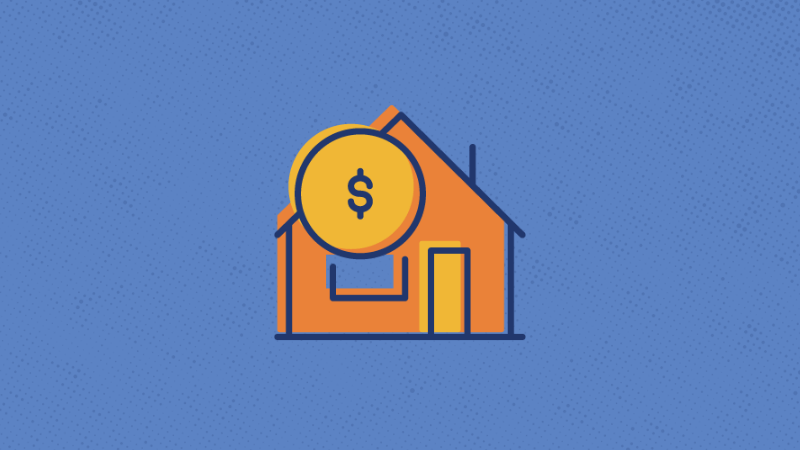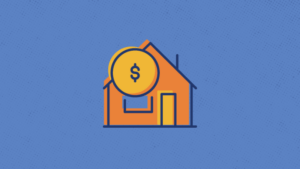Real Estate Lead Costs – How Much Should Agents Pay?
July 13, 2023
Lead Generation, Lead Nurturing

Real Estate Lead Costs: How Much Should Agents Pay for Leads?
In January 2023, many realtors noticed that their cost per lead (CPL) on Homes.com increased significantly above the average PPC real estate seasonal trends. It caused many of the best real estate agents to reassess their marketing strategies: is buying real estate leads the best way to spend valuable advertising money? Does the return on investment justify the cost?
What is Cost Per Lead and Why is it Important?
Cost Per Lead (CPL) is a price model for digital marketing in which the cost of an ad campaign is based on how many leads it generates.
To calculate your cost per lead, divide the total amount you spent on your real estate marketing campaign by the number of leads generated. Your total expenses should include the ad spend, third-party costs (like the tools you used or the service fees for real estate lead generation companies), and the time you spent creating it.
CPL = total amount of marketing costs / number of leads generated
Let’s say you spend $1,000 on a Google ad and generate 20 new leads. Your CPL is then $50.00.
Important KPIs: Cost Per Lead and Cost Per Close
Too often, realtors rely on CPL as the primary metric to determine the validity and effectiveness of their advertising campaigns. A common marketing goal is to lower your CPL—but this only takes into account a fraction of your overall ROI.
It is critical to remember that when you are paying for leads, you are getting just that—leads. Hopefully, they are qualified leads, which will turn into potential clients, which will turn into closed deals. But the rate at which online real estate leads convert to home sales is 1-3%, and it often takes a 12-18-month incubation period. Simply generating more leads for less money won’t guarantee an increase in GCI.
While cost per lead is a critical KPI, it is not the only one to consider. We recommend adding cost per close into the measurements you monitor. Cost per close looks at how much you spend from the beginning to the end of a transaction. It accounts for your conversion rate and gives you a much more comprehensive understanding of your ROI.
Understanding cost per close helps put your CPL in context and can help you make better-informed decisions on acceptable CPLs. Even a big fluctuation in your cost per lead can be acceptable when considered against ROI. If a $10 lead doubles to $20 but that lead converts into a $400,000 transaction, that extra $10 you spent on the lead becomes nominal.
Why CPL is Important
CPL marketing is a handy tool for Realtors, as leads generated through CPL advertising tend to be higher-quality leads with higher conversion rates than those generated through impression-based campaigns. From the very start, the prospect shows his intent by responding to your ad’s call to action (CTA).
Spending money to buy leads should be a pillar in your marketing strategy. It is, therefore, worth figuring out how much to spend and which channels to use. By evaluating the effectiveness and efficiency of their CPL and CPC, agents across your team can make data-driven decisions and optimize their marketing budgets.
What is the Average Cost Per Lead in the Real Estate Industry?
The average cost per lead in the real estate industry varies widely but is generally around $20. In the first half of 2023, Sierra Interactive’s Google Buyer campaigns saw an average cost per lead of US$9 – $13 across the United States and US$5 – $9 in Canada. In the same time frame, Sierra Interactive’s Seller campaigns saw an average cost per lead of US$26-$30 across the USA and US$24 – $28 in Canada. Prices vary depending on multiple factors, including the following:
- Lead Category: The cost of a lead will vary depending on whether it’s a buyer lead or a seller lead. Buyer leads tend to be much more expensive than sellers.
- Lead Sources: Each marketing channel has its own pricing model and process.
- Target Demographic & Location: Certain age groups and zip codes are more expensive than others.
- Season: Advertising during specific times of the year (such as on holidays and in Q4) is more expensive than others.
- The Density of Competitors: If you are competing against a number of other agents to reach the same market, the cost of an advertisement will increase.
- The Quality and Effectiveness of Your Ad: Platforms like Facebook and Google prioritize ads that inspire more user engagement and action.
How Much Should Agents and Teams Be Paying for Leads?
This, of course, is not an easy answer. On average, we recommend spending 10% of your income on your entire marketing strategy. New agents might want to take a more conservative approach, while more established brokerages and agenting teams might feel comfortable spending 15-20% of their income. Either way, you want to decide upon a marketing budget that is sustainable for at least 12 months.
Investing in lead generation should be viewed as a long-term commitment. Crystal Nosal, who leads Sierra Interactive’s managed advertising services, suggests agents and teams should put their best foot forward and understand they are in it for the long run. Building a pipeline of leads takes time, and the return on investment might not be immediate. However, by consistently investing in lead generation for a sustained period, the chances of seeing a return and witnessing growth year over year become more promising.
A Closer Look at Different Types of Real Estate Lead Costs
From social media platforms to industry-specific sites like Trulia and Zillow, there are several options when it comes to investing your marketing money. As a real estate professional, knowing all your options and understanding how each works is essential.
Facebook is an excellent option for residential agents looking to target local homebuyers and generate high-quality seller leads. As a social media platform, Facebook (and Instagram) can target specific demographics likely to consider a new home, such as newlyweds or empty nesters. It also works well for raising your brand awareness by advertising active listings and keeping your leads informed and engaged.
Facebook uses two pricing models: cost-per-click (CPC) and cost-per-mille or cost-per-thousand-impressions (CPM). With CPC, you pay for each user who clicks on your advertisement. With CPM, you pay each time one thousand people have viewed your ad.
Facebook uses a bidding system to assess how well your ad performs compared to your competitors. If your ad is more effective, Facebook will run it. You should monitor your campaigns closely and tweak them to improve their quality and competitive advantage.
Facebook’s average cost-per-click in the real estate industry is $1.81. Social media platforms tend to be the most inexpensive option of all lead sources. The flip side is that these paid leads only show a conversion rate of 1-3% with an incubation time of at least 12 months. Compare the price to $40 for a Zillow lead, and it seems like a steal. But take into account that new leads from Zillow convert at 7% with only a 3-6-month incubation period, meaning you’re likely to see a return on investment sooner. You’ll spend less time nurturing those leads to a transaction.
Neither channel is better or worse than the other. Having a well-balanced lead source mix is crucial. Building a strong pipeline will often include leads from a variety of channels and some leads will be more transaction-ready (i.e., have a shorter incubation period) than others. Generally, the less you spend on a lead, the less qualified they are likely to be.
Google ads are the perfect example of the balance between cost and quality. On average, a real estate cost per action (CPA) on Google is $116.00. That might feel outrageously expensive, but by partnering with an ad management service provider like Sierra Interactive, you could see 11-12% of your Google leads convert to active customers. That means for every 100 clicks on your ad, about 12 are high-quality leads. And when calculating cost per close (and not just cost per lead), that’s a strong ROI.
Google offers three advertising options: search ads, display ads, and video ads. Search ads appear at the top of a page in response to a user’s query. Someone might search “Real estate agent in Kansas City,” and if you’ve paid for the spot (and are a Realtor in Kansas City, of course), your name, photo, and contact information can appear at the top of the page.
Display ads are text, images, and videos that appear as people browse the web, use apps, and watch videos. Video ads are mainly shown on YouTube (the most visited site on the web) and can appear within videos (before, during, or after streaming) and as masthead or bumper ads.
Google uses a pay-per-click (PPC) pricing model, in which you are charged each time a user clicks on your ad. With Google, you can create a flexible budget, target specific audiences, and access fast data on how well your campaign is performing. Like Facebook, Google uses bidding strategies to determine the cost and placement of your ad.
Zillow
Sure, some people enjoy seeing which homes are on the market and browse Zillow for fun. But many are interested, even just casually, in purchasing or selling a home, making it an excellent site for real estate professionals to advertise on.
To do so, you need to set up a free Zillow Premier Agent (ZPA) account and commit to spending a minimum of advertising dollars targeting a specific zip code. You then gain access to Zillow’s customer relationship management (CRM) tools and can easily claim listings as your own.
Generating new real estate leads on Zillow typically costs between $20-$60, depending on the market that you are targeting. Beyond gathering potential clients’ contact information, you can also pay to have your information placed on listings that aren’t your own. That way, prospective homebuyers will call you when interested in learning more about a property.
Zillow also offers Zillow Flex, but it’s currently invite-only. Zillow Flex has no upfront cost and connects Realtors with high-quality homebuyer leads. Not until a transaction closes does an agent pay a percentage-based success fee.
Realtor.com
Like Zillow, Realtor.com is an excellent website for reaching active and interested leads. But unlike the other lead sources that use CPL and PPC pricing models, Realtor.com uses a set monthly fee. The site breaks its leads into two segments: non-exclusive leads and exclusive leads.
Non-exclusive leads are shared with all agents in a particular zip code and cost, on average, $200/month. Exclusive leads are given only to one agent and cost around $1,000/month. Again, it is a cost/benefit analysis of which leads are stronger and generate a higher overall ROI.
Realtor.com’s Local Expert feature allows you to target hyper-local leads and position yourself as a reputable and trustworthy agent in the area. You can also have your listings marked as Featured Listings, placing your properties in front of more viewers and potentially generating higher leads.
Offline Lead Costs
While digital marketing campaigns offer excellent lead-generation services and are essential for generating new real estate business, it is crucial to continue using old-school marketing and networking methods as part of a comprehensive marketing strategy. Keep in mind that these examples will also need to be factored into your marketing budget.
- Attend networking events with other agents both in and outside your brokerage. Learn best practices from other agents and connect with them so they think of you when looking to give a referral.
- Keep your real estate website and landing pages up to date with new listings and optimized with proper SEO.
- Don’t be afraid to cold-call phone numbers gathered from expired listings and FSBO listings through REDX. Your kindness and professionalism might catch homeowners just when they are starting to think about selling again. Plus, if you use an automated dialer and ringless voicemail software, you can exponentially increase the number of leads you can reach.
- More than anything, remember that your past-client database is the highest-converting client database you could possibly have. Keep in touch with them by sending out regular newsletters or even personalized direct mail. Wish them a happy birthday and happy home anniversary, and even treat them to lunch every so often. You want their repeat business and their referrals—never stop nurturing these leads.
The extra touches of care you layer in will further establish your business relationships, build trust, and solidify your reputation as a highly-effective real estate agent.
How Competition Impacts Your Cost Per Lead
As with any auction, the higher the competition, the higher the price. The more realtors bidding to advertise to your niche market, the more it will cost to place an ad. That’s why the real estate industry saw CPLs rise so much in January—a number of Realtors had increased their advertising budgets in Q4 of 2022, and sure enough, prices soon followed suit.
Despite changes in the market, there are several different strategies for bringing down your CPL—and winning the bidding war—when advertising on sites like Facebook and Google. But in most cases, your CPL is mainly affected by the competition within your target market and demographic and, thus, outside your control.
If you are finding your CPL and PPC campaigns become unsustainable for your budget, take some time to analyze the market and rethink the best way to use your marketing money. Always keep in mind historic performance and cost per close as a way to determine how much of a CPL increase you can absorb.
How to Use Your CPL to Determine Your Ideal Budget and Channels
The goal of calculating your CPL is to better understand where to invest in advertising. You want to keep your costs low and gain the highest return possible. Here is how to use your CPL to determine your ideal budget and marketing channels:
- Calculate your Cost Per Lead (CPL) for marketing channels like Facebook, Google, Zillow, and Realtor.com.
- Analyze the quality of leads generated from each channel by looking at the conversion rate and the number of leads that result in successful real estate transactions.
- Evaluate each channel’s return on investment (ROI) by considering the CPL and the Cost Per Close (CPC) metrics.
- Identify the channels that provide the highest quality leads at a reasonable CPL and CPC. These channels should be prioritized in your marketing budget allocation.
- Consider the demographics and preferences of your target audience when selecting marketing channels.
- Continuously monitor and track the performance of each marketing channel to identify any changes in CPL, CPC, or lead quality. Adjust your budget and channel allocation accordingly to optimize your lead costs.
Optimizing Lead Costs with Sierra Interactive’s Ad Management Solutions
As a real estate agent, you are best at caring for people navigating the largest purchase of their lives. And while it is empowering to run your real estate business well, it can also be overwhelming to try to do it all. Sierra Interactive offers an ad management solution tailored specifically for Realtors and their PPC marketing campaigns.
Sierra Interactive provides you with a proven marketing framework that generates transaction-ready leads. That way, you can focus on lead conversion, lead nurturing, and closing deals while we target the right keywords, monitor the campaign’s metrics, and deliver strong results.
Contact Sierra Interactive today to see how we can work together to create dynamic marketing strategies that keep you relevant, save you money, and, ultimately, grow your business.
Author
Schedule a Demo
Thoughtfully designed features, intuitive workflows and stunning UX. You’re about to find out why top-performing real estate teams pick Sierra.
Sign UpPrevious Post
Real Estate Drip Campaigns: 10 Tips for Success
Related Posts

Lead Generation
Top 10 Strategies for Capturing Real Estate Seller...

Lead Generation
The Power of Email Marketing in Real Estate...

Lead Generation
How to Generate Real Estate Seller Leads Online

Lead Generation
